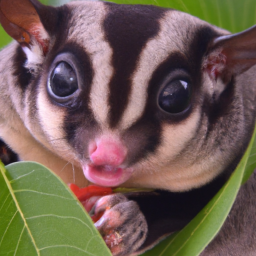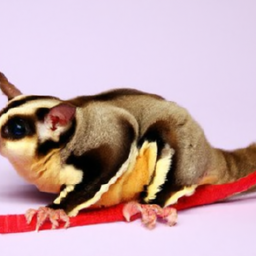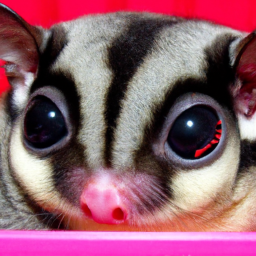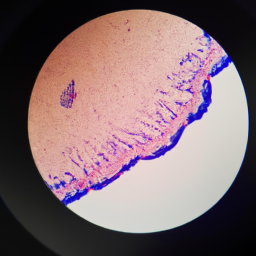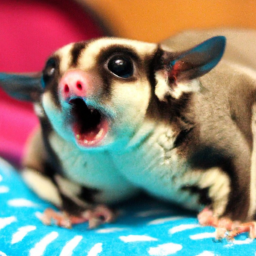What To Use To Clean Sugar Glider Cage
In this article, you will learn about the best materials to use when cleaning your sugar glider’s cage. Keeping their habitat clean is crucial for their health and well-being. By using the right cleaning products and tools, you can ensure a safe and comfortable environment for your sugar glider to thrive in.
When it comes to cleaning your sugar glider’s cage, it is important to use products that are safe and non-toxic. Avoid using harsh chemicals or cleaners that may be harmful to their sensitive respiratory systems. Instead, opt for mild dish soap or a vinegar and water solution to clean the cage. Make sure to rinse the cage thoroughly to remove any residue before allowing your sugar glider back in. Additionally, use a soft cloth or sponge to gently scrub the cage, avoiding abrasive materials that may damage the cage’s surface. By using these safe and effective cleaning methods, you can maintain a clean and healthy living space for your sugar glider.

What To Use To Clean Sugar Glider Cage
Cleaning your sugar glider’s cage is an essential part of maintaining their health and well-being. Regular cleaning helps to remove odors, bacteria, and debris that can accumulate in the cage over time. However, it’s important to use the right cleaning supplies and equipment to ensure a safe and effective cleaning process. In this article, we will guide you through the steps of properly cleaning your sugar glider cage and provide recommendations on the best supplies to use.
Cleaning Supplies
Before you begin cleaning the sugar glider cage, gather the necessary cleaning supplies. The following supplies are recommended for optimal results:
-
Vinegar: Vinegar is an effective and natural cleaning solution that can help remove stains, odors, and bacteria. It is safe for most cage materials and does not contain any harmful chemicals that could harm your sugar glider.
-
Water: Water is used to dilute the vinegar solution and rinse off the cage surfaces. Preferably, use filtered or distilled water to avoid any potential contaminants.
-
Mild Soap: In some cases, you may need to use a mild soap to remove stubborn stains or residue. Choose a gentle soap that is free of harsh chemicals and fragrances.
Equipment
In addition to the cleaning supplies, you will also need the following equipment:
-
Soft Cloth: A soft cloth, such as a microfiber cloth or a cotton cloth, is ideal for wiping down the cage surfaces and drying them.
-
Spray Bottle: A spray bottle is essential for evenly distributing the vinegar solution onto the cage surfaces. Choose a spray bottle with a misting nozzle for a more efficient application.
-
Scrub Brush: A scrub brush with soft bristles will help you remove stubborn stains or residue that may be stuck on the cage bars or floor.
Now that you have gathered all the necessary supplies and equipment, let’s dive into the step-by-step process of cleaning your sugar glider cage.
Step 1: Removal of Sugar Glider
The first step is to safely remove your sugar glider from the cage. Transfer your sugar glider to a secure, temporary location such as a bonding pouch or a small travel cage. Make sure the temporary location is safe, comfortable, and easily accessible for your sugar glider.
Step 2: Removal of Waste
Once your sugar glider is in a safe place, it’s time to dispose of any solid waste and clean out the soiled bedding. Carefully scoop out any feces or urine spots using a disposable scooper or a tissue. Dispose of the waste properly according to your local regulations. Remove any soiled bedding and replace it with fresh, clean bedding.
Step 3: Vinegar Solution
Now it’s time to prepare the vinegar solution. In a spray bottle, mix equal parts vinegar and water. Shake the bottle gently to ensure the ingredients are well combined. The vinegar solution acts as a natural disinfectant and helps to break down any stubborn stains or bacteria present on the cage surfaces.
Step 4: Scrubbing
Spray the vinegar solution generously onto the cage surfaces, including the bars, floor, and any accessories that can be safely cleaned. Allow the solution to sit for a few minutes to help loosen any dirt or stains. Then, use a scrub brush to gently scrub all areas of the cage, paying extra attention to corners, crevices, and areas with visible stains or buildup. The soft bristles of the brush will not damage the cage material while effectively removing any debris or residue.
Step 5: Rinsing
After thoroughly scrubbing the cage, it’s time to rinse off any remaining cleaning solution. Thoroughly rinse the cage with clean water, ensuring that no traces of the vinegar solution or soap residue remain. Pay close attention to removing any residue from the bars or floor, as it can be harmful if ingested by your sugar glider.
Step 6: Drying
Once the cage is rinsed, it’s important to allow it to air dry completely before returning your sugar glider. Placing the cage in a well-ventilated area or using a fan can help speed up the drying process. Ensure that the cage is completely dry to prevent any potential bacteria growth or moisture-related issues.
Step 7: Reassembling the Cage
After the cage is dry, it’s time to reassemble it and make it comfortable for your sugar glider. Replace the clean bedding, ensuring that it is spread evenly throughout the cage. Reintroduce toys, perches, and any other accessories that were removed during the cleaning process. Ensure that all toys and accessories are in good condition and free from any potential hazards.
What Cleaning Products Can Help Prevent Sugar Gliders from Peeing on You?
To stop sugar glider peeing on you, consider using non-toxic pet-safe cleaners. Choose gentle products with enzymatic formulas to break down odors without harsh chemicals that could harm your pets. Regularly clean their habitat and use a pet-safe disinfectant to minimize accidents.
Can Cleaning the Sugar Glider Cage Help Prevent it from Peeing on You?
Yes, cleaning the sugar glider cage regularly is essential for sugar glider peeing prevention tips. A clean environment not only reduces the likelihood of your sugar glider peeing on you but also promotes their overall health and well-being. Keep the cage clean and odor-free to discourage this behavior.
Conclusion
Regularly cleaning your sugar glider’s cage using the appropriate cleaning supplies and equipment is crucial for providing a healthy and safe environment for your pet. The vinegar solution, alongside water and a mild soap, can effectively clean and disinfect the cage without posing any harm to your sugar glider. By following the step-by-step cleaning process outlined in this article, you can ensure that your sugar glider’s cage remains a clean and comfortable space for them to thrive in.
